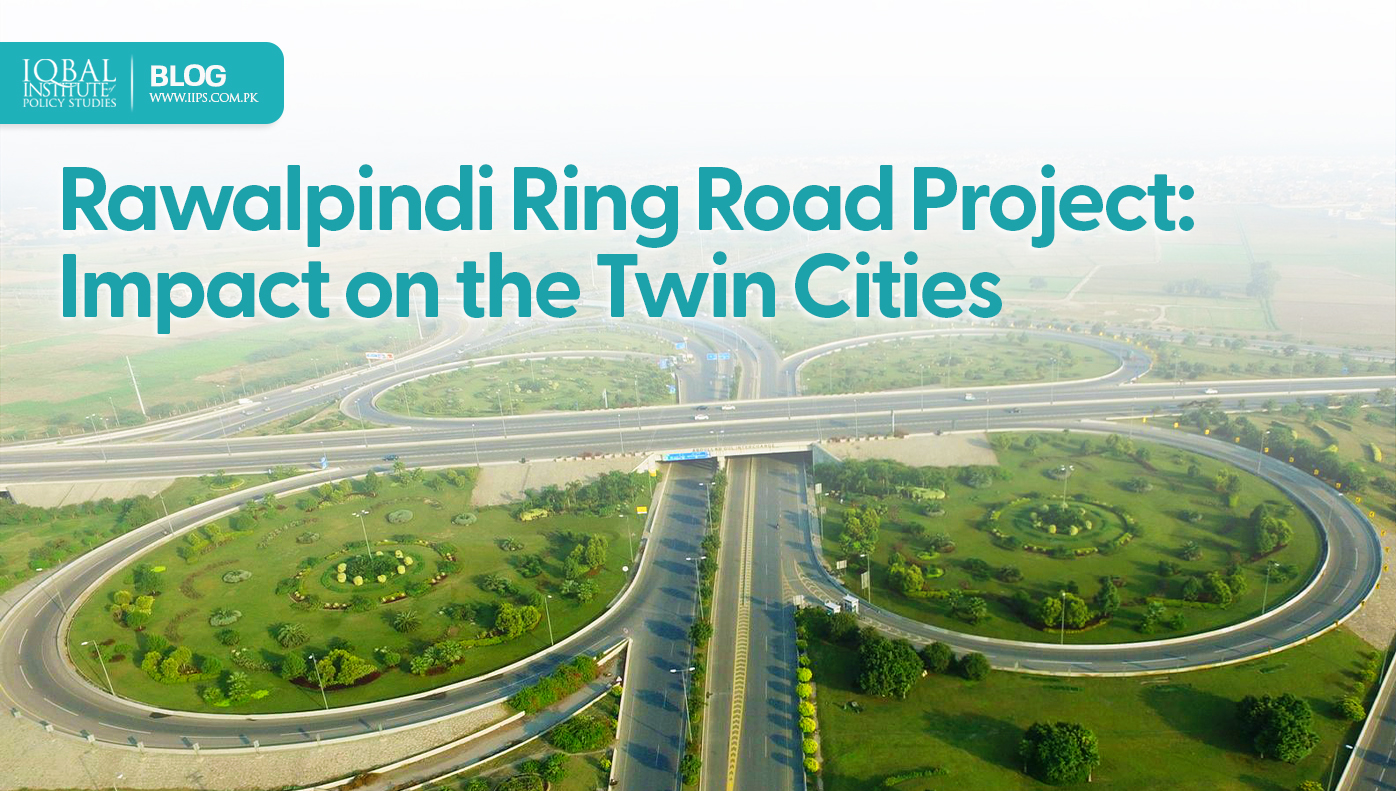The Rawalpindi Ring Road (R3) Project is a forthcoming highway project for the citizens of Rawalpindi and Islamabad. The idea of this project was floated in 1997, which materialised recently when Prime Minister Imran Khan laid its foundation stone at Thalian. The Rawalpindi Development Authority (RDA) aims to construct the project on a priority basis to combat traffic congestion in the twin cities. The project will complete in two years.
This Blog by the Iqbal Institute of Policy Studies will discuss everything you need to know about the R3 project in detail.
Details of the Rawalpindi Ring Road
The total length covered by the R3 project is 65.5 kilometres, which comprises six lanes and multiple interchanges (refer to Table 1 below). The route of the project originates from the National Highway (N-5) at the location of Baanth, crossing through various roads such as Chakbeli Road, Adiala Road, Chakri Road, and finally culminating with the motorway (M-2) at Thallian Interchange. The ring road will provide an alternative route by connecting N-5 with M-2, which will greatly reduce traffic congestion. The civil work on the R3 project includes fencing (90m), grade-separated interchanges, bridges, underpasses, and toll plazas. The road is designed to provide a fast and efficient route for trade traffic and accessibility to major cities, designed to operate at an optimum speed of 120 km/h.
| Length | 65.5km | |
| Width | 100m | |
| Interchanges | Eight (08) | |
| Service Stations | Four (04) | |
| Lanes | Six (06) | |
| Roadside Plantation | 150,000+ seedlings | |
| Total Cost | PKR 33.7 billion/- | |
| Contractor | Frontier Works Organisations (FWO) |
Cost of the Project
The total cost of the project is estimated to be PKR 33.7 billion, which is the total sum of the construction cost and the land acquisition cost.
Construction Cost: PKR 27 billion/-
Land Acquisition Cost: PKR 6.7 billion/-
Contract of the Construction Work
The contract for the construction work of the R3 project is awarded to Frontier Works Organisation (FWO), which has a portfolio spanning over 55 years.
Interchanges on the Rawalpindi Ring Road
A total of eight interchanges are planned as per the map of the R3 Project. These interchanges are enumerated below:
- N-5 Radio Pakistan (National Highway)
- Chakbeli
- Adiyala
- Chakri
- M-2 Murat (M-2 Motorway)
- Airport
- Hakla (D.I. Khan)
- N-5 Sangjani
- The Need for R3 Project
Traffic congestion is the main issue faced by the residents of the twin cities, Rawalpindi and Islamabad. As the G.T road is the main trade route for traffic passing from Lahore to Islamabad/Rawalpindi, towards Peshawar. The route divulges into the heart of Rawalpindi City, creating blockage and congestion on major roads. Rapid urbanisation has resulted in increased use of vehicles which has exceeded the capacity of the present road infrastructure. The R3 project will provide an alternate route as well as multiple socio-economic opportunities, thus, the project is also dubbed ‘Rawalpindi Ring Road Economic Corridor’. The R3 project will facilitate the urbanisation of the southwest and southern regions of Rawalpindi.
Other Benefits of the R3 Project
The main benefit of the R3 project is connectivity with the main points of the city. For example, the Radio Pakistan interchange is closer to Rawalpindi Saddar, which will result in a faster commute. The R3 will also provide greater accessibility to the New Islamabad International Airport. For travellers entering Islamabad from the Motorway, the commute to otherwise ‘farther areas’ such as DHA, Bahria and Rawat will be at a twenty-minute distance. Moreover, the R3 economic corridor will connect the rural, and peri-urban areas with the twin cities. This will ensure the provision of more employment opportunities, development opportunities and various socio-economic benefits. The RRR will connect various rural and under-developed parts of the city too. The R3 project will also facilitate the real estate sector primarily housing societies and residential projects. The infrastructure development in the form of highways will result in a surge in property prices and increase the value of projects thus constructed.
Conclusion
In a nutshell, the Rawalpindi Ring Road Project will boost the economy by creating various socio-economic opportunities, providing alternate travel routes, greater connectivity and combatting traffic congestion. The R3 project connects with the rural regions at different interchanges, which will provide economic opportunities for such regions. For example, the Chakri interchange connects with the Chakri region, which is home to various pending and completed housing projects. The R3 highway will provide greater connectivity to the main city centres and increase property prices. One of the main issues faced by the residents of the twin cities is traffic congestion. The R3 projects provide an alternate trade route for people travelling from Lahore to Islamabad via a Motorway from the GT road. The project also provides intra-city connectivity by off-loading the traffic burden from the major arteries of the twin cities. The R3 project is going to be one of the premier developmental projects in the Rawalpindi/Islamabad region. The project has commenced, and the citizens are hoping for it to complete within the stipulated two years.



Leave a Reply